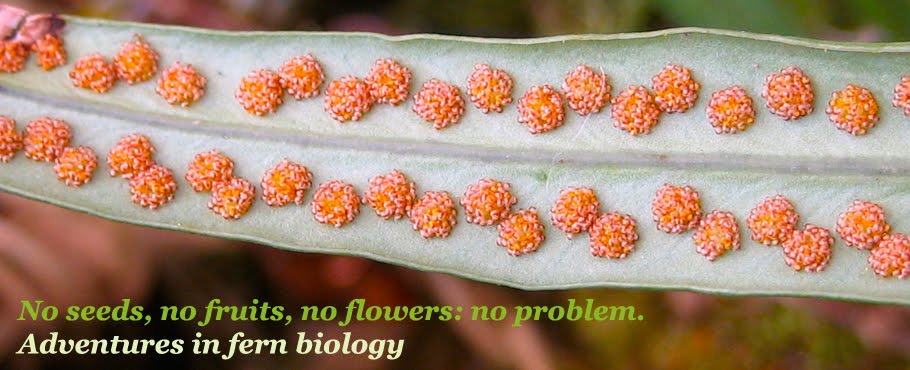This unfurling process of the tightly-curled leaf is called circinate vernation. Circinate refers to the circular or ring-shape of the fiddlehead, and vernation comes from 'vernal' (meaning 'spring'), when new leaves tend to emerge. By remaining tightly rolled up, the growing tip of the leaf is protected during emergence, and this protection is often supplemented by thick hairs or scales that cover the fiddlehead, as you can see in some of these photos. You can also see that the lateral leaves are in fiddlehead-form too, just as the tip is.
Wednesday, February 20, 2008
Fiddleheads
Friday, February 1, 2008
Thelypteris
We saw lots of Theylpteris in Costa Rica; these are two species of Thelypteris subgenus Goniopteris. The subgenus is characterized by the basal pinnule veins, which come together where neighboring pinnules meet (this is very clear in the left-hand picture). Technically these leaf divisions aren't really pinnules, since the blade isn't divided all the way to the costa (the midrib of each major leaf division; the costa is the strong rib visible towards the right side of the right-hand picture), but it's convenient to characterize them that way.
Thelypteris is a common fern in North American woods and wetlands. Thelypteris palustris, the marsh fern, and Thelypteris novaboracensis, the New York fern, are pretty typical-looking ferns that most people have probably seen but not really noticed...
Subscribe to:
Comments (Atom)







